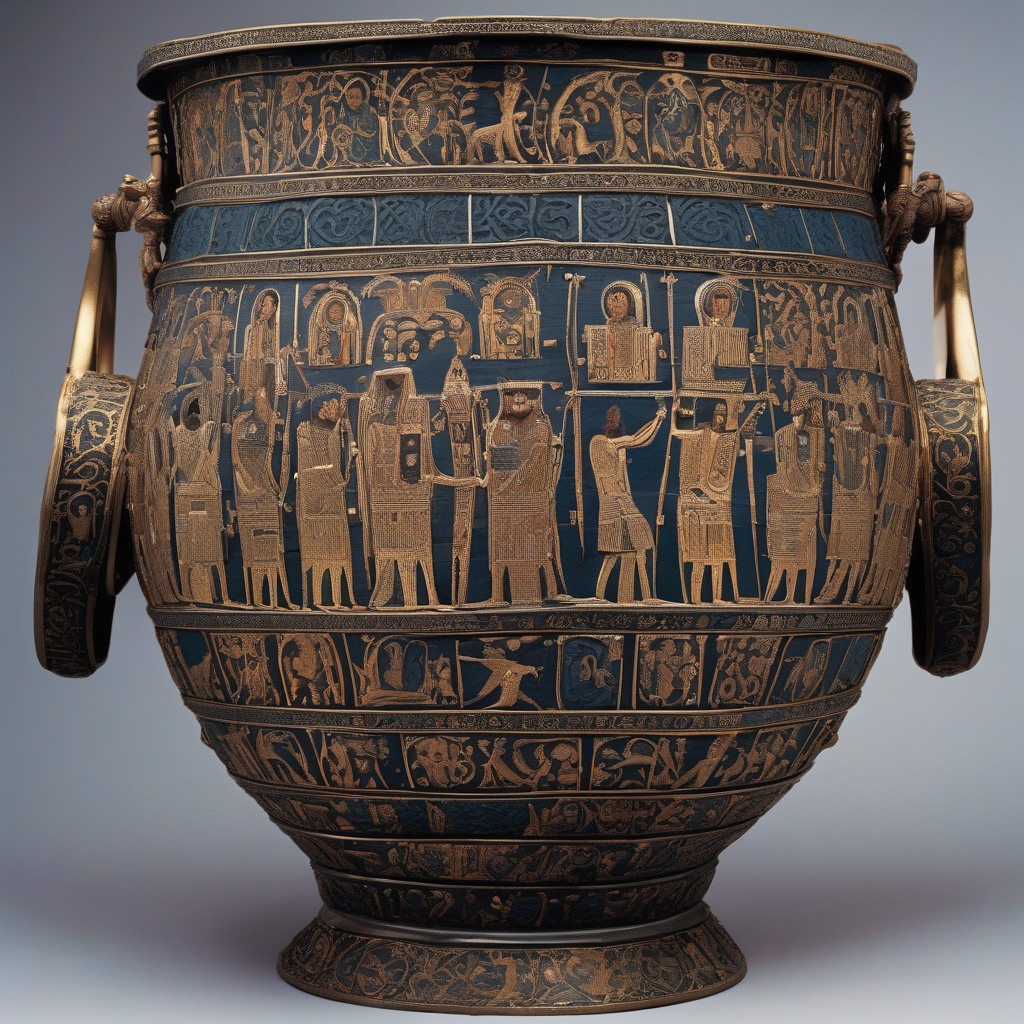Rare 1,500-Year-Old Byzantine Bucket Unearthed at Sutton Hoo Reveals Fascinating Insights into 6th-Century England’s Funerary Practices
Archaeologists at Sutton Hoo in England discovered the last piece of the stunning and unusual Byzantine bucket, shedding light on the intriguing funerary practices of 6th-century England. This remarkable find provides a rare glimpse into the cultural exchanges and connections that existed between the Byzantine Empire and England during the early Middle Ages.
The Byzantine bucket, dating back 1,500 years, was originally crafted in the Eastern Mediterranean region and made its way to England, a testament to the extensive trade networks and connections that spanned across vast distances during that time. What makes this discovery particularly intriguing is the purpose for which the bucket was used – to hold human bones.
The presence of human bones within the Byzantine bucket raises a myriad of questions and speculations about its significance in the context of burial customs and rituals in 6th-century England. Was it a symbolic representation of the journey to the afterlife? Or did it serve a more practical purpose in the burial process?
One theory suggests that the Byzantine bucket may have been used to collect and store the bones of a revered individual, perhaps a chieftain or a prominent figure in the community. The elaborate craftsmanship and intricate designs adorning the bucket imply that it held great importance and was intended for a significant ritual or ceremony.
Furthermore, the discovery of the Byzantine bucket at Sutton Hoo adds another layer of complexity to the site’s historical significance. Sutton Hoo is renowned for its Anglo-Saxon burial mounds, including the iconic ship burial of an unknown king, which was unearthed in the 1930s. The presence of the Byzantine bucket alongside these other archaeological treasures highlights the diverse cultural influences and interactions that shaped early medieval England.
In addition to its cultural and historical implications, the discovery of the Byzantine bucket underscores the importance of ongoing archaeological research and exploration at sites like Sutton Hoo. By uncovering and studying artifacts such as this rare bucket, archaeologists can piece together the puzzle of England’s past and gain a deeper understanding of the people, societies, and connections that existed centuries ago.
As we continue to unravel the mysteries of the past through discoveries like the Byzantine bucket at Sutton Hoo, we are reminded of the rich tapestry of history that lies beneath our feet. Each artifact, each find, offers a new perspective on the lives and traditions of those who came before us, allowing us to connect with our shared heritage in meaningful ways.
The story of the rare 1,500-year-old Byzantine bucket found at Sutton Hoo serves as a testament to the enduring legacy of the past and the endless possibilities for discovery and insight that await beneath the surface.
archaeology, history, Byzantine Empire, Sutton Hoo, cultural exchange












